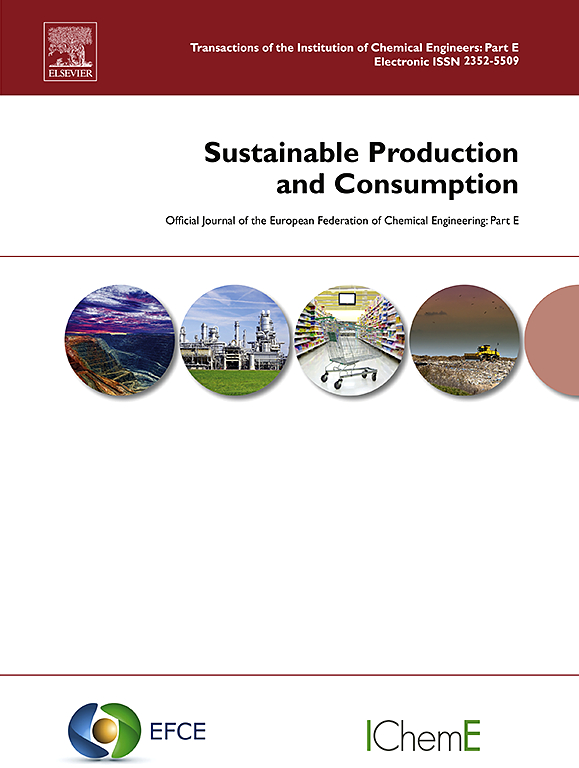Barriers and drivers for biogenic CO₂ utilization: implications for the future market
IF 10.9
1区 环境科学与生态学
Q1 ENVIRONMENTAL STUDIES
引用次数: 0
Abstract
Utilization of biogenic CO₂ (bio-CO₂) presents a promising strategy to combat climate change while making use of renewable resources. However, it is an early stage market. This study therefore aims to explore the barriers and drivers for bio-CO₂ utilization and their implications for shaping the bio-CO₂ market, using Sweden as an example due to its diverse bio-CO₂ sources and existing initiatives. Twenty-four actors were interviewed, representing different types of market actors, which enabled differences between actors to be identified. For example, producers emphasized economic and market-related barriers, while users addressed uncertainties related to the supply chain and quality requirements. Among the key barriers identified are an uncertain policy landscape, as well as economic and market-related barriers that hinder bio-CO₂ utilization. Improving environmental performance is identified as a key driver for bio-CO₂ utilization but requires overcoming barriers such as high costs and payback requirements to become enacted. Other identified key drivers are the potential for new market opportunities for CO₂, such as e-fuel production, and an increased interest in bio-CO₂ over its fossil-based counterpart. There is a need for a diverse set of actions to support the development of the bio-CO₂ market, such as long-term, stable policies and regulations that support investment and market creation, along with better coordination among governmental organizations. This study thus contributes a holistic perspective on the prerequisites for bio-CO₂ utilization by exploring barriers and drivers for bio-CO₂ from different market actor perspectives and identifying policy implications, using Sweden as a case study. Future research can explore other regions and strategies.
生物源性二氧化碳利用的障碍和驱动因素:对未来市场的影响
利用生物源CO₂(bio-CO₂)是利用可再生资源应对气候变化的一种很有前景的策略。然而,这是一个早期的市场。因此,本研究旨在探讨生物二氧化碳利用的障碍和驱动因素及其对塑造生物二氧化碳市场的影响,并以瑞典为例,因为瑞典的生物二氧化碳来源和现有举措多种多样。我们采访了24位参与者,他们代表了不同类型的市场参与者,从而确定了参与者之间的差异。例如,生产者强调经济和与市场有关的障碍,而使用者则强调与供应链和质量要求有关的不确定性。确定的主要障碍包括不确定的政策环境,以及阻碍生物二氧化碳利用的经济和市场相关障碍。改善环境绩效被确定为生物co₂利用的关键驱动因素,但需要克服诸如高成本和回报要求等障碍。其他确定的关键驱动因素是二氧化碳的新市场机会的潜力,例如电子燃料的生产,以及对生物二氧化碳的兴趣增加,而不是化石燃料。为支持生物co₂市场的发展,有必要制定长期稳定的投资和市场创造政策和规定,并加强政府部门之间的协调。因此,本研究以瑞典为例,从不同的市场参与者角度探讨生物二氧化碳利用的障碍和驱动因素,并确定政策影响,从而为生物二氧化碳利用的先决条件提供了一个整体的视角。未来的研究可以探索其他地区和策略。
本文章由计算机程序翻译,如有差异,请以英文原文为准。
求助全文
约1分钟内获得全文
求助全文
来源期刊

Sustainable Production and Consumption
Environmental Science-Environmental Engineering
CiteScore
17.40
自引率
7.40%
发文量
389
审稿时长
13 days
期刊介绍:
Sustainable production and consumption refers to the production and utilization of goods and services in a way that benefits society, is economically viable, and has minimal environmental impact throughout its entire lifespan. Our journal is dedicated to publishing top-notch interdisciplinary research and practical studies in this emerging field. We take a distinctive approach by examining the interplay between technology, consumption patterns, and policy to identify sustainable solutions for both production and consumption systems.
 求助内容:
求助内容: 应助结果提醒方式:
应助结果提醒方式:


